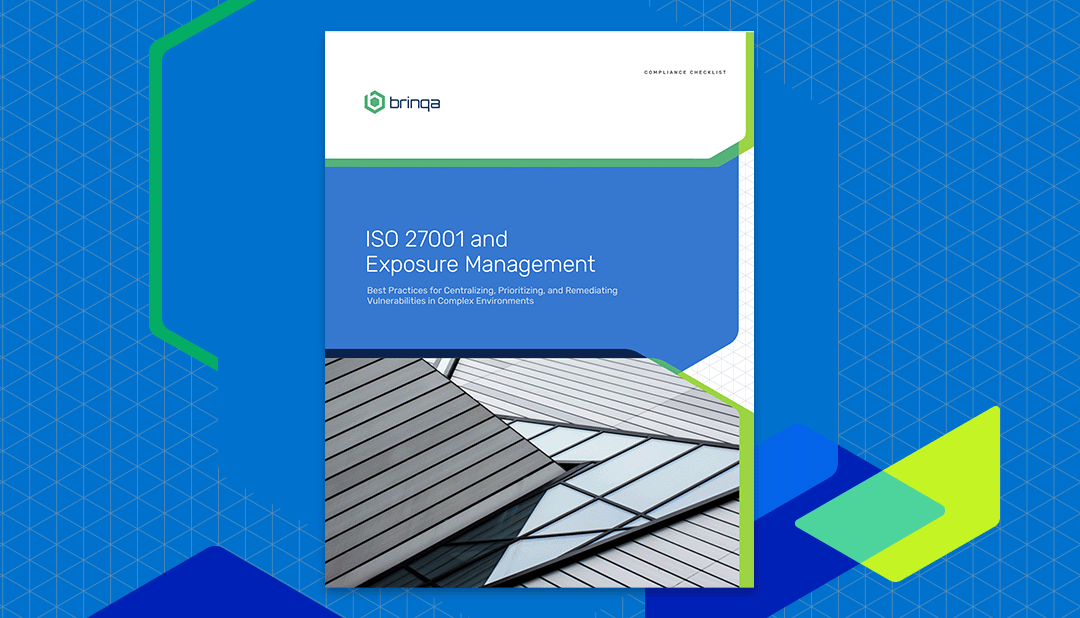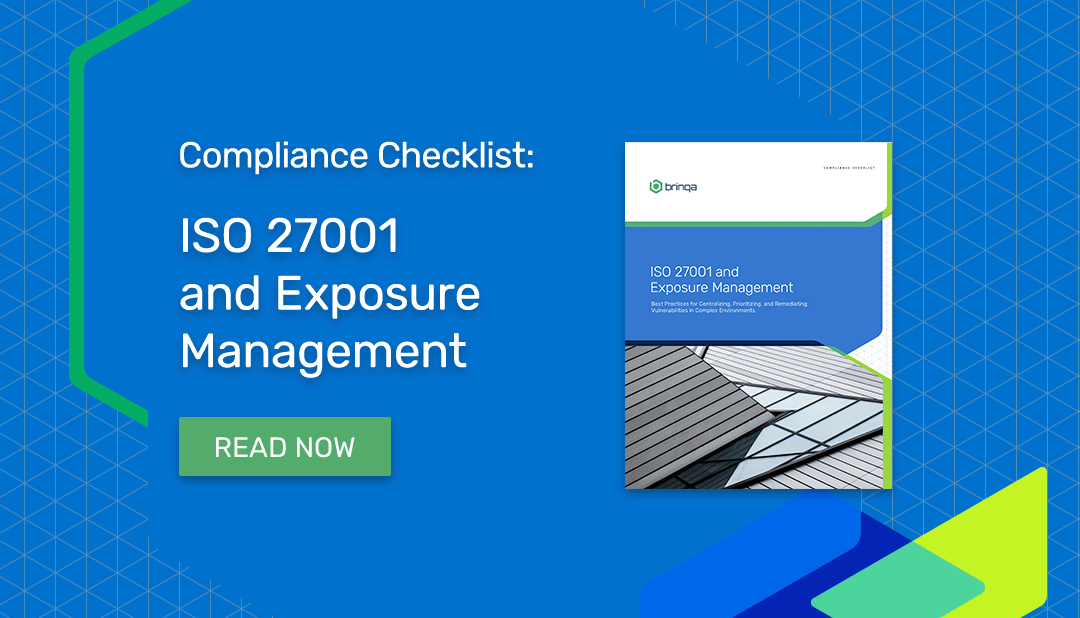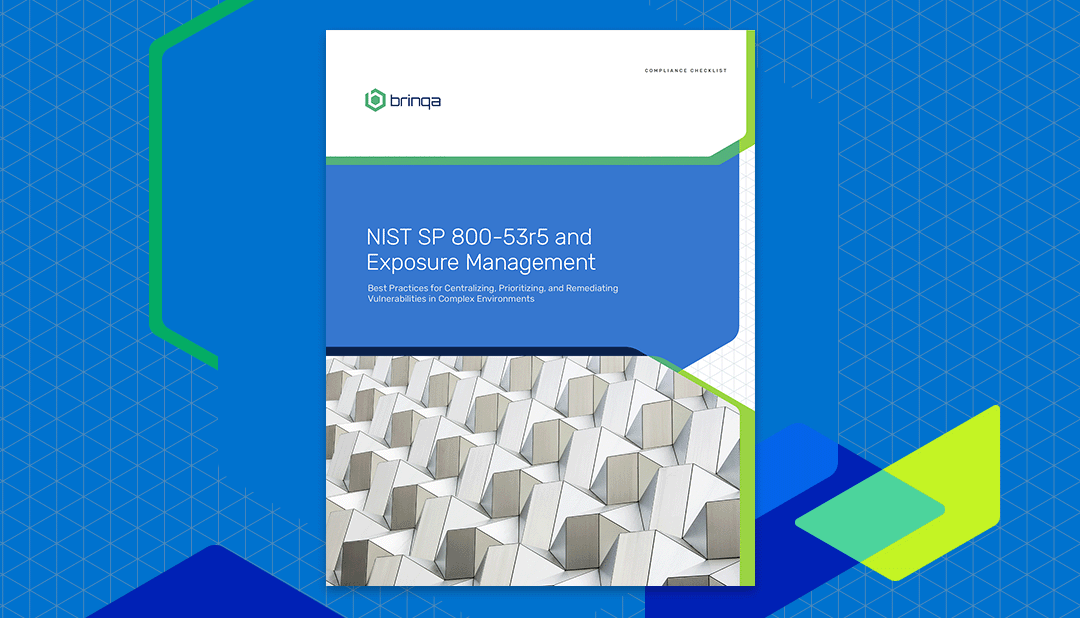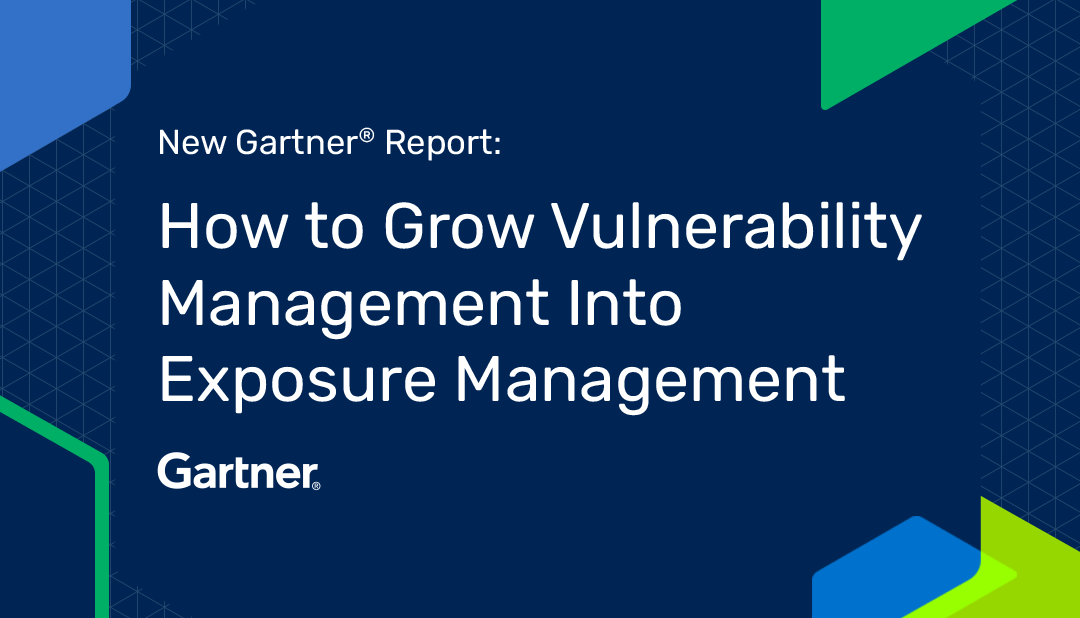
ISO 27001 Compliance Guide for Vulnerability Management

Managing Vulnerabilities and Exposures with ISO 27001
ISO/IEC 27001 (commonly shortened to ISO 27001) is a globally recognized standard for managing information security. Developed by the International Organization for Standardization (ISO) and the International Electrotechnical Commission (IEC), it provides a framework for establishing, implementing, maintaining, and continuously improving an information security management system (ISMS).
Organizations adopt ISO 27001 to safeguard customer data, intellectual property, and other sensitive assets using systematic, risk-based processes. Vulnerability management is a central pillar of ISO 27001, with controls to enable security teams to detect, assess, and remediate technical weaknesses that could be exploited by attackers.
This blog post outlines how ISO 27001 supports effective vulnerability management, highlights relevant clauses and security controls, and shares best practices for streamlining centralization, prioritization, and remediation across complex environments.
> Download the ISO 27001 and Exposure Management Checklist
How ISO 27001 Relates to Vulnerability and Exposure Management
Security vulnerabilities—such as unpatched software, misconfigured systems, and weak credentials—pose serious risks. ISO 27001 requires organizations to proactively identify and address these risks through several core requirements, including:
- Risk Assessment & Treatment (Clauses 6.1.2 & 6.1.3): Identify vulnerabilities, assess their likelihood and potential impact, and select appropriate risk treatment options (e.g., mitigation, acceptance).
- Management of Technical Vulnerabilities (Annex A: Control 8.8): Stay informed about known technical vulnerabilities, evaluate exposure, and take timely corrective actions.
- Monitoring and Continuous Improvement: Implement processes to monitor new vulnerabilities (e.g., CVE feeds, vendor advisories), conduct regular scans or penetration tests, and update ISMS controls based on lessons learned from incidents.
Key ISO 27001 Controls for Vulnerability and Exposure Management
While vulnerability management may seem straightforward, no single scanner can detect every issue. Organizations often rely on multiple scanners and data sources to cover the diverse technologies within their environment and reduce blind spots. As a result, it can be difficult and time-consuming to gain a complete, unified view of the vulnerability landscape.
Here we highlight key ISO 27001 clauses and security controls most relevant to vulnerability and exposure management. For each control, we’ve summarized the focus and outlined best practices—based on Brinqa’s experience supporting risk-based programs—to help streamline processes across complex environments that use multiple scanners and data sources.
NOTE: This is not intended as comprehensive guidance. Selected controls have been edited for brevity and clarity. For a complete reference, consult the full ISO 27001 requirements and your compliance auditor.
Control 6.1.2 – Information Security Risk Assessment
Focus: Define a consistent process to identify, assess, and prioritize risks related to confidentiality, integrity, and availability.
Best Practices:
- Consolidate findings from IT, cybersecurity, and business systems into a single source of truth spanning infrastructure, cloud, and applications.
- Standardize and enrich vulnerability scores using CVSS, EPSS, risk intelligence, and contextual factors such as exploitability, data sensitivity, and compliance impact.
- Normalize and dynamically update risk scores with external threat intelligence feeds, including CISA KEV and “Exploited in the Wild” data.
- Use structured data models and tagging to support customizable risk scoring and remediation workflows.
- Define workflow triggers (e.g., detection, assessment, patching, SLA violations) to automate actions such as ticket creation, data enrichment, and notifications.
- Choose tools with guided interfaces, pre-built integrations, and visual builders to simplify complex automation across tools.
- Provide dashboards that visualize risk across vulnerabilities, assets, applications, and business units, and allow stakeholders to customize their view.
Control 6.1.3 – Information Security Risk Treatment
Focus: Define how selected risks will be treated, ensure relevant controls are applied, and document decisions in the Statement of Applicability (SoA).
Best Practices:
- Use a workflow engine to automate tasks such as ticket creation, alerting, and exception handling across remediation processes.
- Integrate bi-directionally with tools like ServiceNow, Jira, GitLab, and Azure DevOps to manage tickets and sync statuses, updates, and evidence.
- Ensure remediation workflows support both operational visibility and audit-readiness by capturing full lifecycle context and closure proof.
- Provide stakeholders with customizable views of remediation progress and residual risk.
Annex A: 8.8 – Management of Technical Vulnerabilities
Focus: Stay informed about vulnerabilities, assess exposure, and act quickly to mitigate technical risks.
Best Practices:
- Consolidate vulnerability data and findings from IT, cybersecurity, and business systems into a single source of truth across infrastructure, applications, and cloud.
- Standardize vulnerability scoring across tools and keep it dynamically updated to reflect changes in the attack surface.
- Apply business context—such as asset value, business impact, and criticality—to improve prioritization accuracy.
- Automate remediation workflows using integrated ITSM systems to drive consistent, traceable action.
- Deliver stakeholder-specific dashboards and reports to communicate remediation progress and effectiveness.
Want the complete checklist with all mapped controls and recommendations? Download the full ISO 27001 and Exposure Management Checklist to strengthen your vulnerability program.
FAQ: ISO 27001 and Vulnerability Management
1. What does ISO 27001 require for vulnerability management?
ISO 27001 requires organizations to identify, assess, and treat risks related to technical vulnerabilities. Key requirements include risk assessment (Clause 6.1.2), risk treatment (Clause 6.1.3), and control over technical vulnerabilities (Annex A: Control 8.8).
2. What is Annex A: 8.8 and how does it relate to vulnerability management?
Annex A: 8.8 – Management of Technical Vulnerabilities – mandates that organizations gather information on technical vulnerabilities, assess their exposure, and take timely corrective action such as patching or isolating affected systems.
3. Does ISO 27001 require vulnerability scanning or penetration testing?
While ISO 27001 does not mandate specific tools or tests, regular vulnerability assessments—such as scanning and penetration testing—are considered best practices and support the requirement for continuous improvement.
4. How does ISO 27001 differ from other frameworks like NIST in terms of vulnerability management?
ISO 27001 is risk-based and less prescriptive than NIST. It enables organizations to define their own controls, as long as they can justify how those controls address identified risks. NIST frameworks often provide more detailed technical guidance.
5. How can organizations prioritize vulnerabilities to meet ISO 27001 goals?
Organizations should go beyond base scores like CVSS and incorporate contextual factors such as exploitability, business impact, and regulatory exposure to prioritize vulnerabilities that pose the greatest real-world risk.
6. Is automation allowed or encouraged under ISO 27001?
Yes. ISO 27001 does not prohibit automation—in fact, automated tools and workflows for risk scoring, ticketing, and remediation tracking can help organizations meet the standard’s requirements more consistently and efficiently.
7. How can Brinqa help with ISO 27001 compliance?
Brinqa centralizes vulnerability data, enriches it with business and threat context, and automates remediation workflows to help organizations implement ISO 27001-aligned processes at scale.
How Brinqa Simplifies ISO-Aligned Vulnerability Management
Security teams today are overwhelmed by the volume of vulnerabilities and complexity of tools. ISO 27001 provides a clear framework—but implementation often requires modern, unified solutions to achieve real results.
Brinqa helps organizations align with ISO 27001 by delivering a platform purpose-built for centralizing, scoring, and orchestrating vulnerability remediation.
What Brinqa Delivers:
- Unmatched Integrations: Connects with 220+ security, IT, and business tools to unify vulnerability data across infrastructure, cloud, and applications.
- Enriched Prioritization: Combines exploitability, business impact, and compliance requirements to surface the most urgent risks.
- Remediation Orchestration: Automates ticketing, ownership, and SLA tracking through native workflows and ITSM integrations.
- Custom Dashboards: Provides stakeholders with tailored views that drive accountability and improve decision-making.
- Expert-Guided Deployments: Brinqa’s solutions are configured to your specific risk posture and ecosystem—no rigid templates or generic playbooks.
For organizations seeking to operationalize ISO 27001 requirements for vulnerability management, the Brinqa platform offers a scalable, intelligent path forward.
Download the ISO 27001 and Exposure Management Checklist or request a demo to see how Brinqa can help.




